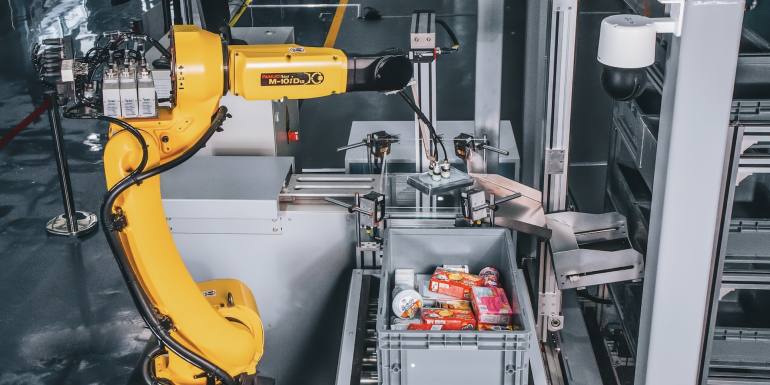The industrial internet of things – business intelligence and manufacturing
From production to supply lines, manufacturing is one of the most data intense sectors. It’s estimated that the average factory generates more than 1TB of data a day – the equivalent of 250,000 photos or 20,000,000 emails. This abundance of data is due to one thing: the interconnected web of smart machines known as the ‘Industrial Internet of Things’ (IIoT).
But data is of little value until it can be stored, analysed and used towards a solution. This is precisely where business intelligence can help.
What are the industrial and non-industrial internet of things?
The internet of things is the network of smart devices that share information between themselves, predominantly via the internet, but also via closed, secure networks. The ‘things’ can be anything that has a sensor to measure information and relay that to other devices: coffee makers, blood sugar monitors, thermostats, or smart watches. Everything in a modern home is part of the internet of things.
But networks like this aren’t confined to the home, they’ve spilled out into the world of manufacturing. Factories, supply lines, distribution centres and more, are all full of smart machines and sensors monitoring the performance of every step of the process, and even automating others. For example, car production lines have long been manned by robotic arms that can build the vehicles with little human intervention, and agricultural farming is full of self-driving vehicles sewing, feeding, and harvesting crops.
The number of smart machines in a standard factory far outnumber those in our homes, and they produce vastly more data too. Think of an Amazon warehouse robot that autonomously picks and transports products throughout its facilities. It has cameras, LiDAR, GPS, accelerometers, bar code scanners, and a host of other sensors in a feedback loop which allows it to perform its job.
All this data is a challenge and an opportunity. It requires management, analysis, and human centred reporting. But also, it presents an opportunity for any manufacturing business to massively optimise its performance.
Making the most of the data opportunity
All the data produced within a factory must first be warehoused. It is a consistent pain point that in many manufacturing businesses data is siloed, with some systems unable to share information with others. Good data management and database design can help with this.
Once a manufacturing organisation has centralised its data, then it can be used to improve productivity and performance. Analysis and reporting are essential for this, as raw data has negligible value. Only once that data is analysed can it be used to solve a challenge.
Maintenance and repair
The information produced by smart machines on a production line can also be used in the repair and maintenance of those machines. Decision makers can see when assets are reaching capacity and diagnose when they may require repair.
Balance up- and downtime
A healthy manufacturing process requires planned downtime. It helps extend the longevity of assets and mitigate failures. It also helps to minimise the tangible and intangible costs of downtime, which, depending in the size of the operation, can be thousands per minute.
By analysing the data produced, decision makers can plan for downtime. What’s more, they can predict when it will be required, optimise other areas during that time, and mitigate losses that way.
Quality checks
Quality checks ensure a good product is sent to the distributor, establishing a manufacturers reputation as a leading provider. But they also stop faulty products causing issues in the production line, thereby increasing unplanned downtime.
Harnessing the information from quality checking can help decision makers align the insights from the quality checks with other areas of production.
Geospatial analytics – supply chain management
Possibly more than any other industry, manufacturing uses data from sensors and geospatial location devices. Such devices and data allow organisations to understand the location and movement of items, which is particularly useful in understanding the lines of supply feeding into their factories.
When properly collated, analysed, and reported, this information can help maintain healthy supply chains. A shortage from one provider can be quickly remedied by a surplus from another, and products destined for an overstocked warehouse can be redirected to avoid stockpiling problems.
Keeping the good eggs
Noble Foods is the is the UK's largest supplier of eggs and egg products. Each week it produces and supplies 72 million eggs to major UK retailers. Its production lines, farms and packing and shipping facilities all have large numbers of smart devices producing helpful data.
To help Noble Foods use their data in a smarter way, we provided them with an IBM Cognos solution. This gave them better analysis and reporting with a user-friendly dashboard. In other words, it can now scrutinise and see the data it has, quickly and at a glance, so it can make data-driven decisions. Harnessing the data using its new system, Noble Foods is able to monitor the ongoing costs of egg packing and usage. In turn allowing it to respond to changes, ultimately protecting margins (and eggs).
To find out how you can make the most of your data, speak to our BI experts.



